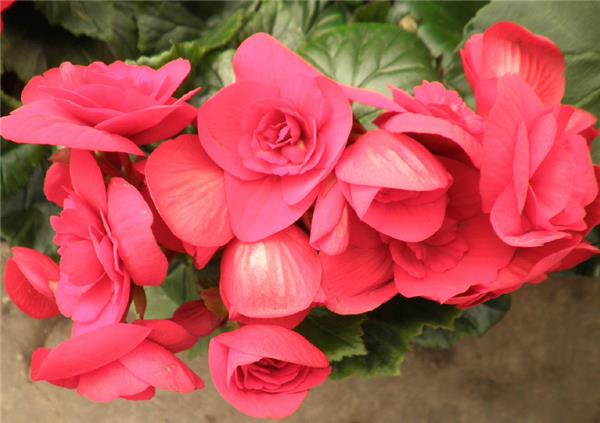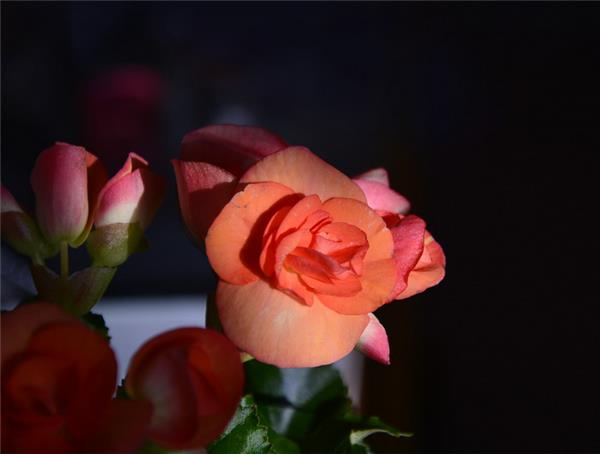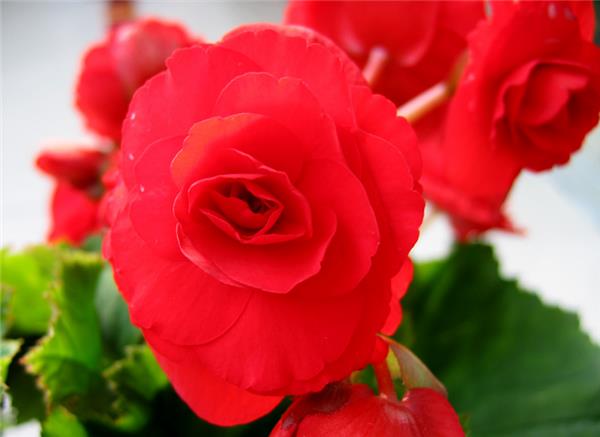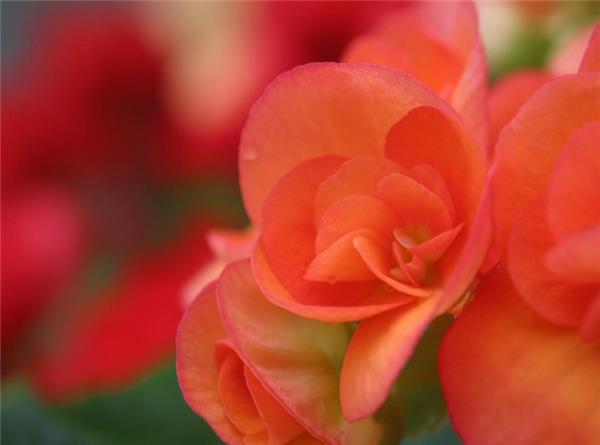Prevention and control skills of Rieger Begonia disease
Because Rieger Begonia is a greenhouse flower, it is easy to suffer from diseases and insect pests and is more difficult to raise. Today, we will share with you the prevention and control skills of Rieger Begonia diseases.

Control skills of Rieger Begonia Disease
1. Spotted disease
1. Symptoms
Rieger Begonia showed yellow mottled leaves, large, round brown necrotic spots, and veins on the petiole turned brown and necrotic. The pathogen is Impatiens Necrosis virus, also known as tomato wilt virus No. 1 TSWV-1. The route of transmission in nature is thrips.
2. Prevention and control methods
① clears the road and the edge of the field may be the source of infection.
② controls the transmission of virus by thrips.
2. Grey mold
1. Symptoms
Botrytis cinerea usually occurs on the lower leaves of cuttings that come into contact with the upper basin substrate. Water stains can quickly expand most or even the entire cuttings that infect leaves. With the passage of time, the infected area became necrotic and turned brown-black to black. When the night temperature is low, the daily temperature is high and the humidity is high, the pathogen is easy to form spores on the leaves and form gray-green conidia.
2. Prevention and control methods
It is very important to control Botrytis cinerea when the greenhouse is closed in winter. Control the small environment and maintain ventilation; keep the leaf surface dry and reduce humidity at night; fungicides can spray Yili, Botrytis cinerea and so on.

III. Bacterial leaf spot
1. Symptoms
The disease often occurs in begonia, and even some growers do not realize that it is a disease. Rieger Begonia is particularly sensitive to this pathogen and is usually characterized by leaf edge necrosis and wrinkling. At the initial stage of the disease, transparent spots appeared on the back of the leaves, and then the number of spots increased rapidly and expanded into water-like spots.
2. Prevention and treatment
There is no specific cure for this disease. The best way to control the disease is to select the virus that does not have the disease. For infected plants, if the degree of infection is mild, only the infected part needs to be removed; if the disease is serious, the whole diseased plant must be removed to reduce the development and spread of the disease. In addition, the use of fertilizer with a slightly higher concentration than the recommended concentration will also help to reduce the disease.
Fungal leaf spot
1. Symptoms
Spots are usually at the leaf margin, tip, and broken veins. The necrotic area is dark brown and initially watery. Inspection of the surface of the basal leaves will generally find irregularly shaped, black clumps and a circle of white mycelium.
2. Prevention and treatment
Apply fungicides; reduce damage; fertilize at the recommended concentration to reduce the harm of the bacteria.

Fusarium oxysporum
Fungi are only found when they cover a large part of the plant. The disease originates from the medium, invades the roots and reaches the top of the plant through vascular bundles. Once the fungus enters the vascular bundle, the plant begins to show symptoms: the growth point and leaves darken, the stem appears large brown wet rot, and then becomes dry rot. A few days later, white fungal hyphae appeared on the outside of the stem. Fusarium oxysporum and Fusarium oxysporum are highly associated with Fusarium oxysporum, because these fungi are parasitic in transport pipes, which are out of control once the disease occurs, and producers can only try their best to ensure hygiene at work.
VI. Downy mildew
This type of fungus is easy to find, and white fungal hyphae can be seen at the top of the leaves. These fungi spread themselves into circles and can be erased. In the case of severe infection, there are fungal hyphae on the back of the leaves, and then these spots turn brown with black spots on the top. The disease usually occurs first on the old leaves and can be infected when the environmental humidity is low, especially in the tuyere of the greenhouse. The prevention and cure method is: when the air is too fast and dry, use a sulfur evaporator at night, so that the surface of the plant will be covered with a thin layer of sulfur, thus inhibiting the growth of fungi.

7. Rhizoctonia solani
If the infected cuttings are not dealt with in time, the infected spots will quickly spread to the entire cutting seedbed. Rhizoctonia solani infects plants or cuttings where the medium is in contact with air, and the cuttings covered with film are the most susceptible to infection. The control method is to use clean medium and clean water to quickly deal with infected plants.
Related
- Wuhan Hospital Iron Tree Blooming Result Was Instantly Frightened by the Gardener Master
- Which variety of camellia is the most fragrant and best? Which one do you like best?
- What is the small blue coat, the breeding methods and matters needing attention of the succulent plant
- Dormancy time and maintenance management of succulent plants during dormancy
- Minas succulent how to raise, Minas succulent plant pictures
- What are the varieties of winter succulent plants
- How to raise succulent plants in twelve rolls? let's take a look at some experience of breeding twelve rolls.
- Attention should be paid to water control for succulent plants during dormant period (winter and summer)
- Watering experience of twelve rolls of succulent plants
- Techniques for fertilizing succulent plants. An article will let you know how to fertilize succulent plants.



